
Great hand for baccarat.
Among the various casino games available online and offline, baccarat is one of the most popular with a great history. This card is loved by the players at land-based casinos for many years and now its online providers are witnessing this game’s fame. Despite being so popular worldwide, there is always someone new to this game, who wants to learn some significant things about baccarat. Here, we are going to tell you vital things about baccarat.
Origin of the Game
The roots or the game are attributed to Europe, in which country it originated is still not known. Many believe that France or Italy is the home country of baccarat. Before being named baccarat, this game had several other names such as Banque, punto banco, Chemin De Fer, and punto banco. Apparently, each country had different names and a little different gameplay. The changes were made throughout the years and we got the popular version of the game that we enjoy today.
How to Play Baccarat
At first glance, this game may seem a little confusing to some users, but it is indeed easy to learn. The objective of the game is to determine if the player or the dealer would have a winner’s hand or the result would be a tie. So, here, players can make bets on the banker’s hand, the hand of the player, or on the tie. However, you need to keep in mind that betting on the hand of the player doesn’t mean you bet on yourself. Bets must be placed prior to the dealer deals the cards.
The aim is to have a card as close to 9 as possible. Here, cards are calculated according to the – 10 value. For instance, 14 is considered 4. If the total of hand you placed bet is close to 9 then you collect the profit. The game is very simple and easy. You can play online bingo as it is fast and instant access to the game. Several online casinos offer free demo games of baccarat, where you can practice and improve your skills.
Where to Play Baccarat?
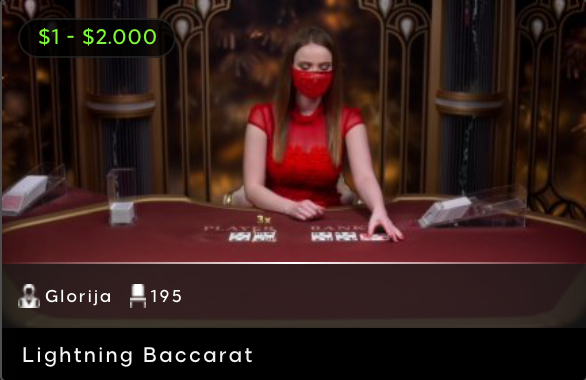
Playing live Baccarat.
Once you have learned the basic rules of the game and how it works, you would want to try a few hands, right? As we mentioned in the introduction that most land-based casinos offer baccarat tables. Players just need to pay the baccarat table fee, buy some tokens, and they are good to go.
However, we think that online gambling can be a feasible option to play this card game. These days, where digitalization has facilitated the users experience, playing baccarat online is way more convenient. They can come in two forms, digitally with the machine and live with real dealers. Both ways of playing are extremely popular and exciting for the players. We have found one well established online casino that recently added to their portfolio the popular Playtech games in addition to their Evolution gaming live offers, therefore we strongly recommend that you’ll try out their much fun eight Decks online baccarat card games.
Baccarat Strategies and Tips
Novice and old players always look for the top strategies for baccarat to guarantee a profit. However, first, we want to make a thing clear that there no certain strategies and tips in baccarat that ensure winning. Unlike blackjack, this casino game is purely a game of luck. But this doesn’t mean that you can’t use some tactics. Here are some tips and tricks that can be used to increase your chances of winning.
Don’t Bet on A Tie or Draw

Betting correctly.
Although there is no foolproof baccarat strategy, there is a small detail that you have to know. As we said there are three kinds of bets here: on the player’s hand, on the banker’s hand, and on the tie. Here, the third type of bet seems very attractive at first glance, since it is associated with a payout that makes you dream.
However, in baccarat, your best weapon is rationality. Betting on a tie has only one chance in thirty of making us win. It also offers the casino an advantage of 14.3%. So, opt for this bet as little as possible.
Betting on Banker’s Hand
Many novice players think that betting on the banker’s hand or betting on a player’s hand have similar chances of winning. But betting in a banker’s hand is a good strategy. Although this bet will get you 5% of the profits in the casino, the chances of winning with this bet are more. The bet on the hand of the bank offers us an opportunity to win up to 44.64%.
Be Responsible
Every person who plays in a casino needs to know that some you win and sometimes you lose. Although it can be a bit difficult to digest, you must accept this reality before even thinking about a strategy for baccarat. We should set a financial goal and set a limit on ourselves. Defining an objective will allow us to be satisfied with certain gains and not fall into excess. In terms of investment, sticking to a limited budget will prevent us from wasting our financial resources and falling into irrationality. Always play responsible to enjoy gambling.
Important Tips
- Bet in favor of the best score from the dealer.
- Don’t try to bet on a tie
- Learn the basic rules of the game and know how it works
- Use bonuses and other perks offered by the casino provider
- Do not insist on a losing streak and play responsibly
- Don’t trust any guaranteed strategy. It is pure luck but uses your instinct as well.

A slot machine is a gambling game that has spinning reels. They have different names: puggy, fruit machine, pokies, fruit machine, one-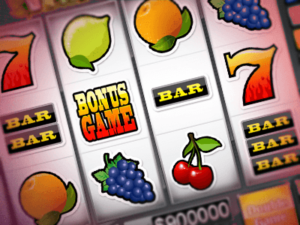 armed bandit, and many others. Depending on the poky, the number of reels could be 3 or 5. Either way, these reels usually have symbols that land at random after you bet and start a spin session. To win in this game, one must have the same characters appearing on the reels. To achieve this randomness and so the games can be fair to both players and casino owners, game developers design modern poker machines with RNGs.
armed bandit, and many others. Depending on the poky, the number of reels could be 3 or 5. Either way, these reels usually have symbols that land at random after you bet and start a spin session. To win in this game, one must have the same characters appearing on the reels. To achieve this randomness and so the games can be fair to both players and casino owners, game developers design modern poker machines with RNGs.
With the invention of the online slot machine, punters had the opportunity of trying out their games for free. Online slots have two gameplay modes: free play mode and the real money mode. Like the name, when you are playing the free play mode, the game allows you to enjoy your sessions without placing bets. Since you are not playing for fun, you will not win any real cash.
Online Slots Basic Characteristics:
-
RNG (Random Number Generator). This is a comp-based microchip that is capable of generating millions of numbers within a second. As the engine that powers the generation of numbers that determine winning combinations, the process of producing these numbers continues even when no one is engaging the machine. When a player presses the play button, this microchip makes numbers that are eventually decoded through complex algorithms to show winning combinations.
-
Paylines. These are lines along which winning symbols appear. They form part of the slot structure or layout.
-
Number of Reels (3-5-6-7). Like paylines, they vary across games. Symbols appear on reels to give winning patterns with regards to paytable specifications.
-
Winning combination. This is a pattern that has the potential to give a payout when appearing on active paylines.
-
Symbols. These are special characters that line up on adjacent reels or across paylines to give a winning formation.
-
Bonus feature. This is a special round activated once you line some symbols in a specific formation as outlined in the paytable. When they form part of the winning combination, they widen your chances of winning or landing a special round through which you can play extra games with the possibility to win more money.
-
Odds of winning. These are calculable approaches that determine a player’s chances of winning. Some slots have higher odds, while others have lower odds. The slot’s odds of winning are relatable to the in-game variance/volatility feature.
-
Payouts. These are the amounts you stand to win should you hit a winning combination while playing for real money.
Types of slots
Although slots refer to a single category of casino games, the term has a wide range of sub-categories based on the specific structure and in-play features. 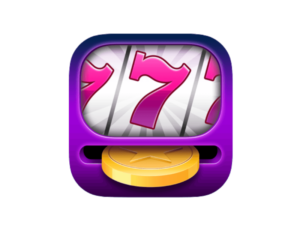
-
Classic Slots. These are mostly old-fashioned slot machines with a simple layout of 3 reels and only a single payline.
-
Video Slots. These games have outstanding graphics, animations, and other eye-popping visuals to make the game more exciting.
-
Fruit Machines. They come with a relatively simple structure, while most of the symbols are represented by fruits like Cherries, Berries, and a range of bar symbols.
-
Pokies. This is an Australian specific name that refers to slot games.
-
3D Slots. These are games that are served with fine graphics and well-choreographed animations, and sound compliments meant to tuck you deep into the game as you relish other in-game features.
-
Progressives. Some slot games come with a progressive jackpot feature. A progressive jackpot gets bigger after every stake on the game as a small percentage is channeled to the prize pool. This pool grows bigger until the lucky winner gets the right combination. With free progressive slots no download you can win a big jackpot, to practice choose games like Mega Moolah and check they work.
-
Multi-payline slots. Most modern slot games are multi-payline games implying that they have more than 1 payline. They could be 5, 10, 20, 25, or even 50.
-
Multipliers. Some slot games have multiplier features that increase their winnings. Activated by the appearance of specific symbols, multipliers are specific across games.
Free Slot Machines
Free slots no download is demo mode games that you can play with no registration before switching to the real money version with unlocked bonus features. Play for free with no deposit, no registration required. All you need to do is have a good internet connection, search for your favorite demo game and start playing for free courtesy of the virtual coins extended to you. The main benefits of free slots:
-
Instant play. Access free slots no download no registration instant play feature through HTML5 embedded in Mozilla, Chrome, and Safari browsers.
-
For fun. The opportunity to spin a game without worrying about the possible money loss gives the latitude maximum fun across multiple themes.
-
No Download No Registration. Free slots do not require downloading. They are accessible directly from the online casino servers courtesy of the inbuilt html5. No registration with the casino is necessary as you do need a platform for processing money deposits and withdrawals.
-
Free spins and bonus rounds. Through free slots no download, you stand a chance of not only enjoying free spins and bonus rounds but also studying how they come about. You have an opportunity to analyze situations and scenarios which lead to the activation of such bonus features.
-
Mobile. Free slots are instantly playable on mobile devices. Enjoy them while on the go through an iPad, iPhone, Android, and Microsoft Windows devices.
Best free online slots no download
It will help differentiate between in-game free spins/bonus round and no deposit free spin bonuses. Free spins or bonus rounds are activated through in-game moves; landing a minimum of 3 scatters symbols anywhere on reels activates a free spins round in most slot games. In the latter, free spins are awarded by specific online casinos upon registration. E.g., Bit Starz casino awards 20 free spins with no deposit after signing up.
These are some of the top games offering generous free spins:
|
Slot |
Logo |
Description |
|
Wheel of Fortune |
|
Free slots Wheel of Fortune no download no registration by IGT is a cool game with great in-game free spins and bonus rounds. It has 5 reels and 30 paylines. All symbols are theme-related, with the game’s logo as the wild that can garner you up to 2500×. Free spins are triggered once you land 3 Yellow scatter symbols on reels 1, 3, and 5. This starts a level-up free spins round where the first level gets 3 free spins and another special wild on reels. |
|
Buffalo |
|
Free Buffalo slots no download is playable on mobile devices and comes with 5 reels and 40 paylines. This game’s free spins bonus is activated when you land at least 3 gold scatter symbols anywhere on reels. As such, 3, 4, and 5 scatter symbols will simultaneously get you 8, 15, and 20 free spins. |
|
Wolf Run |
|
Free Wolf Run slots no download is playable across mobile devices owing to mobile-optimized features that allow playability while on the go. It has 5 reels and 40 paylines while enhanced by an autoplay key, in-game bonuses, and an RTP of 94.98%. Free spins round is its major bonus round activated by 3 bonus symbols on reels 2, 3, and 4. This round comes with an initial reward of 5 free spins and a 2× multiplier. This round can further be re-triggered to get you up to 255 free spins. |
|
Reactoonz |
|
This is a free video slots no download game by Play n’ Go. It plays out on a grid of 7×7 with a uniquely designed cascading reels feature with an alien theme. Every spin allows you to charge up and subsequently trigger 5 quantum features that transform the wild. With an RTP of 96.51%, this game has a high variance and a few rounds of in-game bonuses. The Quantum feature is randomly activated to yield Implosion, Alteration, Demotion, and Incision features. With the Incision feature, the wild is cut at the center to create 2 diagonal lines across the grid, thereby displaying a randomly chosen symbol. |
|
Lightning Link |
|
A unique free slot game from Aristocrat offers you a structure of 5 reels and 25/50 bet lines. It is prevalent because of its big jackpot prizes, where you can activate minor, mini, major, and grand jackpots. Its free spins round is activated when you get 3 Magical Pearl to scatter symbols anywhere on reels. |
Real Money Slot Machines
Real Money slot machines are games in which players deposit money to their respective casino account before hitting the play button. While free slots are advantageous, somehow, real money games have numerous benefits, as captured below.
-
A Variety of Games. Developers like IGT, Aristocrat, and NetEnt, usually roll out real money games regularly to ensure their clients enjoy the latest developments. Several online casinos are available to offer limitless choices irrespective of your preference.
-
You Can Play Anytime, Anywhere. Real money slots can be timelessly enjoyed. The convenience brought about by mobile-based casinos ensures that you timelessly play your favorite games while on the move.
-
Attractive Bonus Schemes. Real money bonuses are 2-fold. You can benefit from generous in-game bonuses as triggered by wild, scatters, or other special bonus symbols. Take advantage of online casinos’ diverse real money bonuses like the Royal Panda welcoming offer, which awards a 100% cash match bonus.
-
Better Chance of Winning. Real money games afford players chances of winning real money given the real cash put into the stake. E.g., Big Red by Aristocrat has an average RTP of 97.04%; hence house edge is 2.96%.
-
Different Payment Options. Real money slot players have access to various payment options: from Visa and MasterCard credit cards to e-wallets like PayPal, Skrill, Poli.
The Biggest Slot Providers
Experienced and resourceful developers design high-quality games that meet modern-day gaming demands. Here are some of the developers that have a desirable profile for producing quality and top-rated games.
|
Company |
Logo |
Description |
|
IGT |
|
Known for its free IGT slots no download no registration, and real money games. The company has hundreds of slot machines in Canada, UK, New Zealand, the USA, and Australia. It has a budget of at least $300 million with continued investments in gaming for wearable devices. Some of its popular games are Davinci Diamonds, Double Diamonds, and Lobstermania. |
|
Aristocrat |
|
A trendy manufacturer of online slot and general casino software. You can play aristocrat slots online free no download as they are available in real money and free demo mode. Based in Australia, it is known for products like Buffalo Gold Revolution, which won Top Performing New Video Reel Core. |
|
Playtech |
|
Based in Sweden, this is a regulated slot machines developer licensed by the Malta gaming authority. It has a collection of real money games and Playtech free slots such as Sunny Scoops, which is fully mobile-optimized. |
|
WMS |
|
Widely known as William’s Interactive, WMS has a profile replete with highly competitive slot games. Examples of free WMS slots no download are Men in Black and the Lord of Rings. |
|
Bally |
|
It has a rich history dating back to the 1930s. It has grown into an award-winning company, having bagged at least 4 awards in the 2014 edition of Floor Technology Awards. Some of the renowned free Bally slots no download games include; Monopoly Hot Shot and Twin Fire Frenzy. |
|
Novomatic |
|
It was established in the 1980s and currently takes pride in at least 255,000 gaming terminals worldwide. Some of the free Novomatic slots online that you can try on your mobile devices are Treasure Jewels Deluxe and Dragon Hits. |
|
Microgaming |
|
A highly respected manufacturer of online slot machines has made a name out of epic casino games like the Mega Moolah progressive game. With vast investments in rolling out technologically advanced games, some of the Microgaming slots free play that you can try are King Arthur, Big Kahuna, and House of Dragons, to mention just a few. |
How to Play Slots Online
If you are planning to start playing online slots, here is a guide:
-
Look out for legit casinos like MelBet, iLuck, or Royal Panda and sign up.
-
Log into your casino using personal credentials
-
Ensure your account is loaded by transferring cash through any of the deposit methods accepted by the online cashier
-
Choose the game you would like to play
-
Adjust the bet range and select the number of bet lines you wish to play
-
Hit the autoplay and keep an eye on winning formations as per the paytable
-
In case of a gamble feature, you may want to double or quadruple your winnings accordingly
Best Online Slots Strategies
Although slot machines are mainly chance games, you may leverage these instructions and win big:
-
Study the game’s volatility or variance before spinning for real money. This helps estimate the probability of winning during a particular round. Games with low volatilities have small but frequent winnings. High-volatile games come with low chances of winning frequently, but winnings are fairly large when they appear.
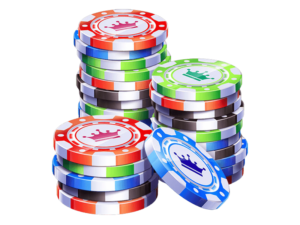
-
Ensure to choose games with Higher RTP averages. Games like Mega Joker by NetEnt (RTP 99%) and Blood Suckers with an RTP of 98% are preferable.
-
When your eyes are set to winning a more considerable amount, ensure to play with the max bet option since this is the only way to access jackpot prizes in many slot games.
-
When playing for real money games, choose casinos with higher payout percentages. E.g., 888 casino has a percentage payout of 96.26%.
-
Ensure to try free demo mode games before playing real money games.
Winning while playing free slots, no download is the best feeling a gamer experience. Here are some ways to enhance your winning chances.
-
Ensure to approach your gaming session with a budget. Do not be tempted to play for long in the hope of getting back the money lost in the initial spins.
-
Look out for casinos with legit licenses. There are illegal sites that may bait you with nice-looking bonuses only to get away with your cash.
-
Research to find out the in-game bonus features before playing the game. Does the game have a generous wild or scatter feature? Is there any special bonus symbol with a super payout?
-
Look out for casinos offering the best welcoming packages. This will significantly improve your bankrolls hence improving your winnings when you hit a winning formation.
Slot machines, whether for real money or otherwise, are a great way to have fun. With so many variations and experienced developers designing befitting games, a player should keep trying new variants to enjoy the latest technologies while standing a chance to win big.
 ‘Roulette’ is the diminutive form of the French word ‘rouelle’, meaning wheel and, although based on older games, was first referenced by its modern name in Bordeaux, in southwestern France, in the early eighteenth century. Roulette is played with a convex, solid wooden wheel with 37, 38 or – since the advent of so-called ‘triple zero’ roulette in 2016 – 39 red and black numbered pockets. A croupier spins the wheel in one direction and, while it is revolving, spins a small ball, colloquailly known as the ‘pill’, in the opposite direction around the running rail on the rim of the wheel. The roulette ball must complete at least three full rotations of the wheel.
‘Roulette’ is the diminutive form of the French word ‘rouelle’, meaning wheel and, although based on older games, was first referenced by its modern name in Bordeaux, in southwestern France, in the early eighteenth century. Roulette is played with a convex, solid wooden wheel with 37, 38 or – since the advent of so-called ‘triple zero’ roulette in 2016 – 39 red and black numbered pockets. A croupier spins the wheel in one direction and, while it is revolving, spins a small ball, colloquailly known as the ‘pill’, in the opposite direction around the running rail on the rim of the wheel. The roulette ball must complete at least three full rotations of the wheel.
Players bet on where the ball will come to rest by placing casino chips, or tokens, on a baize or felt-covered betting area, known as the ‘layout’, marked to correspond with the compartments of the wheel. So-called ‘inside’ bets include a ‘straight up’ bet, on a single number, a ‘split’ bet, on two adjacent numbers and a ‘street’ bet, on a row of three adjacent numbers. Alternatively, so-called ‘outside’ bets allow players to bet on the ‘type’ of number on which the ball will come to rest. Red/black and even/odd are the most basic outside bets, but other examples include ‘column’ and ‘dozen’ bets, which both cover twelve numbers apiece, depending on their position on the layout, or numerically.
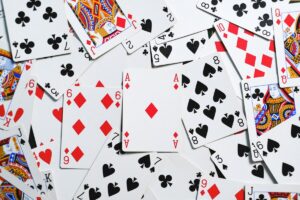 Blackjack, a.k.a. ‘twenty-one’, is a card game in which the aim is to outscore the dealer, or have the dealer ‘bust’ by having a points total exceeding twenty-one. The name ‘blackjack’ was derived from a bonus historically paid to players dealt the jack of spades or the jack of clubs and the ace of spades, but nowadays the term is used to describe any court card or ten and an ace, of any suit, dealt as the first two cards to a player during the game.
Blackjack, a.k.a. ‘twenty-one’, is a card game in which the aim is to outscore the dealer, or have the dealer ‘bust’ by having a points total exceeding twenty-one. The name ‘blackjack’ was derived from a bonus historically paid to players dealt the jack of spades or the jack of clubs and the ace of spades, but nowadays the term is used to describe any court card or ten and an ace, of any suit, dealt as the first two cards to a player during the game.
Blackjack is one of the most popular casino games in the world because it is easy to understand and offers a house edge of less than 1%, depending on the number of decks of cards – typically between one and eight – used in the game. Indeed, by using a set of rules, known as ‘basic strategy’, which describe the optimal way to play any hand, skilled players to reduce the house edge to around 0.5%.
In casino blackjack, before any cards are dealt, each player places one or more bets, depending on how many hands they wish to play at a time, in the designated area in front of them. Each player hand receives two cards, face down, while the dealer hand receives two cards, one of which, known as the ‘upcard’, is dealt face up. With the exception of blackjack, which outranks all other 21-point hands, the value of a hand is the sum of the individual cards; aces count as 1 or 11, court cards count 10 and all other cards count as face value.
Players may stand pat with their cards or draw one or more additional cards, but if total value of any hand exceeds 21, the hand ‘busts’ and the bet loses. Other options include doubling a bet, in return for one, and only one card, splitting a pair into two individual hands and surrendering a hand, which results in losing half, but only half, of the money staked on it.










